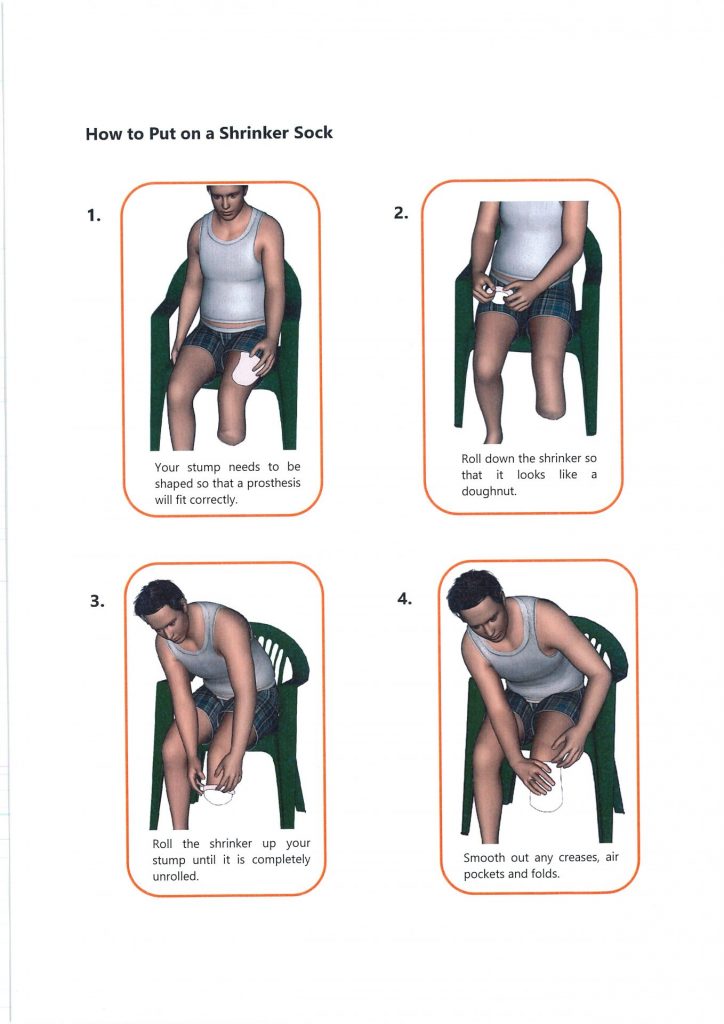
Your stump will significantly vary in size from the immediate postoperative period to when you are fitted with a prosthetic limb.
This is a normal after surgery and healing and one of the reasons why a drainage tube is attached to most surgical wounds. When swelling occurs after an injury it is due to oedema which is a build up of fluid in the tissue. In the case of amputation it is caused by the trauma of surgery, however conditions such as diabetes can make oedema worse.
Oedema is caused by the small blood vessels leaking fluid (primarily water) into the spaces between tissues. This is the body’s attempt to bring more white blood cells to an injured area for healing. This fluid leakage causes noticeable swelling as it has nowhere to go, this is especially problematic after amputation because gravity will draw fluid to the end of the limb. Others symptoms of oedema include:
- tight and shiny skin in the swollen area
- heavy legs and stiff joints
- pressing the area leaves a dent in the skin
- clothes are tight around the area
Oedema needs to be treated as it hampers healing prosthetic use by affecting the socket fit. It can indicate a medical condition that needs treatment such as kidney disease. Amputees are shown how to apply compression wraps to their stumps to alleviate oedema, some more tips to reduce fluid retention are:
- exercise regularly
- when sitting do not allow the limb to hang over the edge of your seat; use a suitable stump support
- bandage the limb or wear a shrinker as directed
- in some cases a rigid dressing removable dressing is fitted
When the wound has healed adequately and before prosthetic limb fitting, you will be shown how to apply compression to the stump to reduce oedema and encourage good stump shape prior to prosthetic limb fitting. You may be shown how to do this with bandages or a shrinker sock. A shrinker sock is similar to an elasticised brace used for injuries to knees or elbows.

Both methods of compression work well when done correctly. Regardless of which method of compression wrap you use make sure that it is reapplied after bathing. When you remove the compression wrap it is recommended that you massage the stump for 1015 minutes before reapplying. Do not leave the same compression wrap on for more than 12 hours without reapplication and do not leave the compression wrap off for more than 15 minutes as any swelling can return rapidly.
Once the prosthetic limb is fitted, increases in stump size will hinder comfortable socket fitting. It is therefore important to continue to use the compression sock as directed. You will experience an initial rapid decrease in stump size and this process will become less evident as you become more mobile. You will need to continue to use the sock until you have used your prosthetic limb for some months and your stump is not varying in size. However, you may find the sock is comfortable and you may continue to use it indefinitely when you are not wearing your prosthesis, especially at night.
Amputees who do not use a prosthetic limb can still wear their shrinker sock to protect and help keep their stump in good condition.


